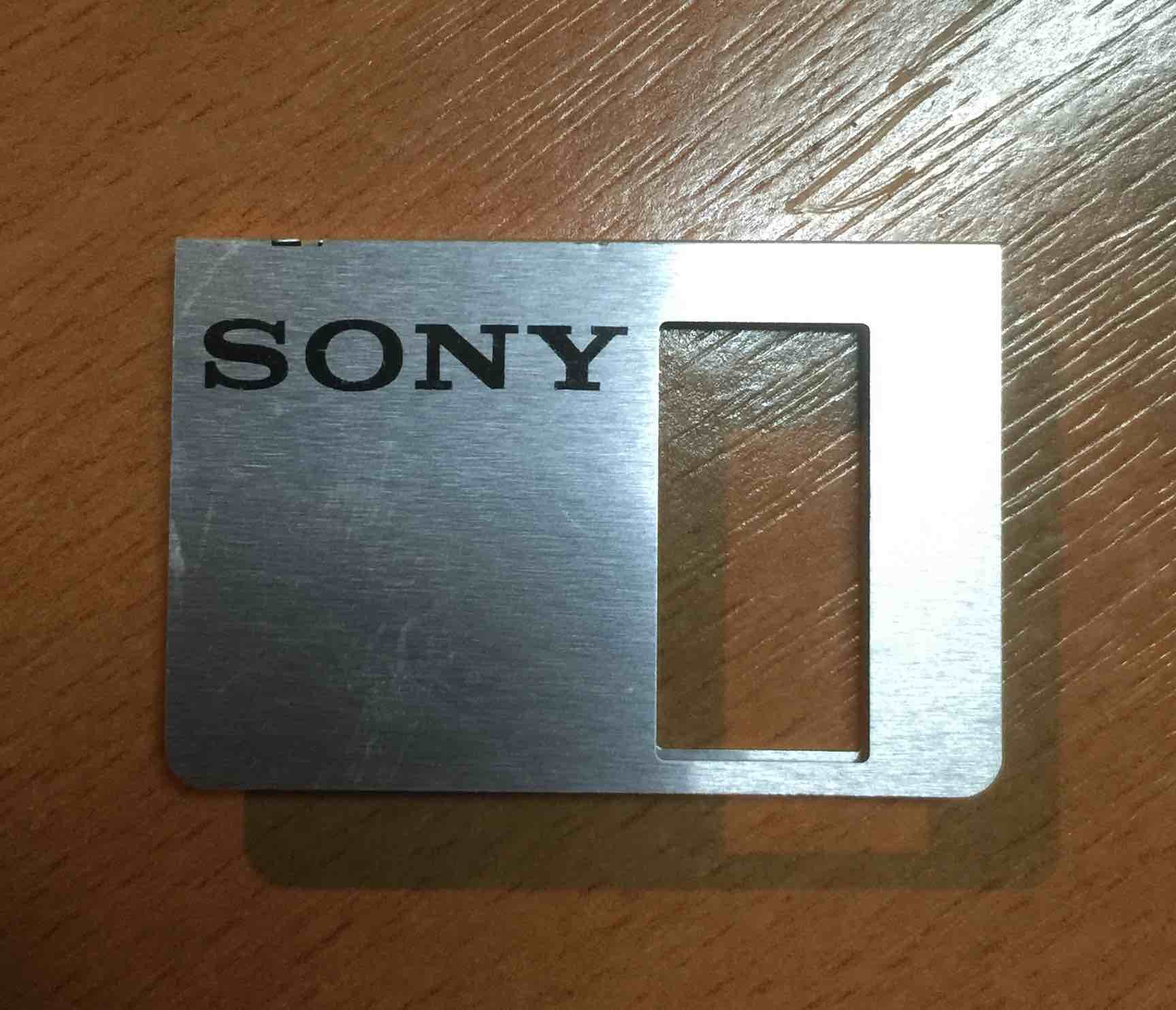Project 6- Stories About Us
While I was in the process of designing Electra, I was also meeting and communicating with the acclaimed Egyptian director, Dina Amin. Stories About Us is based on a book and adapted to the stage. It is three scenes dealing with relationships and our perception of them. Each of the three is a different cast and location, with the first scene being an episodic journey through a relationship spanning 40 years. The second scene is set in the Cairo airport and the last scene is an interior living room.
The play was to be stage in both the Gerhart Theatre at AUC’s main campus, and then transfer to the 300 seat Falaki Theatre at AUC’s campus in downtown Cairo. This was the first time a transfer like this had ever been done. As the director and I communicated about our ideas for the Gerhart production, we had to keep reminding ourselves of how those ideas would work for the transfer. Some ideas we would hold onto, others had to be let go of. A central idea of the Gerhart production was to emphasize the intimacy of the space. We decided on a narrow thrust configuration with not only seating on all three sides, but the row closest to the acting space would be people seated on the floor.
Stories About Us- Initial ground plan
In the above rough drawing the edge of the painted floor to designate the playing area is marked in red. Downstage, between the audience section are entrance and exit areas both for the audience and the actors. Upstage is a small platform with steps leading up to it. Backing this platform is large lightbox that would have vinyl prints of images for each of the three scenes. Behind all of that is a full stage black curtain to mask the backstage area and the upstage entrances. My original idea for the lightbox involved a super clever way of switching images that were rolled up and could be changed like a sideways oleo drop. I was very proud of myself for that one.
Then, as is always the way, I watched a run through at the end of the second week of rehearsals and noticed several things. For one, no one ever went up on to the platform. Also, the scene change from one scene to the next needed to be done in less than a minute and we couldn’t spare people to go switch the printed images in the light box. And last, the meter and a half of the space the platform and lightbox took up was needed for the action of the play more so than my clever idea. I immediately communicated to the shop that the drawings that I had just given them that day were no longer valid, and I would have different drawings in the morning. I had a quick talk with the director and she left me to my own creative ideas, as long as whatever I came up with would work for two interior apartments and the interior of the Cairo airport. On the bus on the way home I did some rough sketches in my mind and decided to use a deconstructed back wall comprised of wide vertical slats that framed a projection screen. We had already planned on using projections for the first scene, so I decided to use projected images instead of the vinyl prints for the other two scenes. I did a render and walkthrough (https://www.youtube.com/watch?v=NVbS5s1RWx0) for the director and she felt that was more appropriate for the theatrical story than the original clever idea.
Stories About Us- New front render
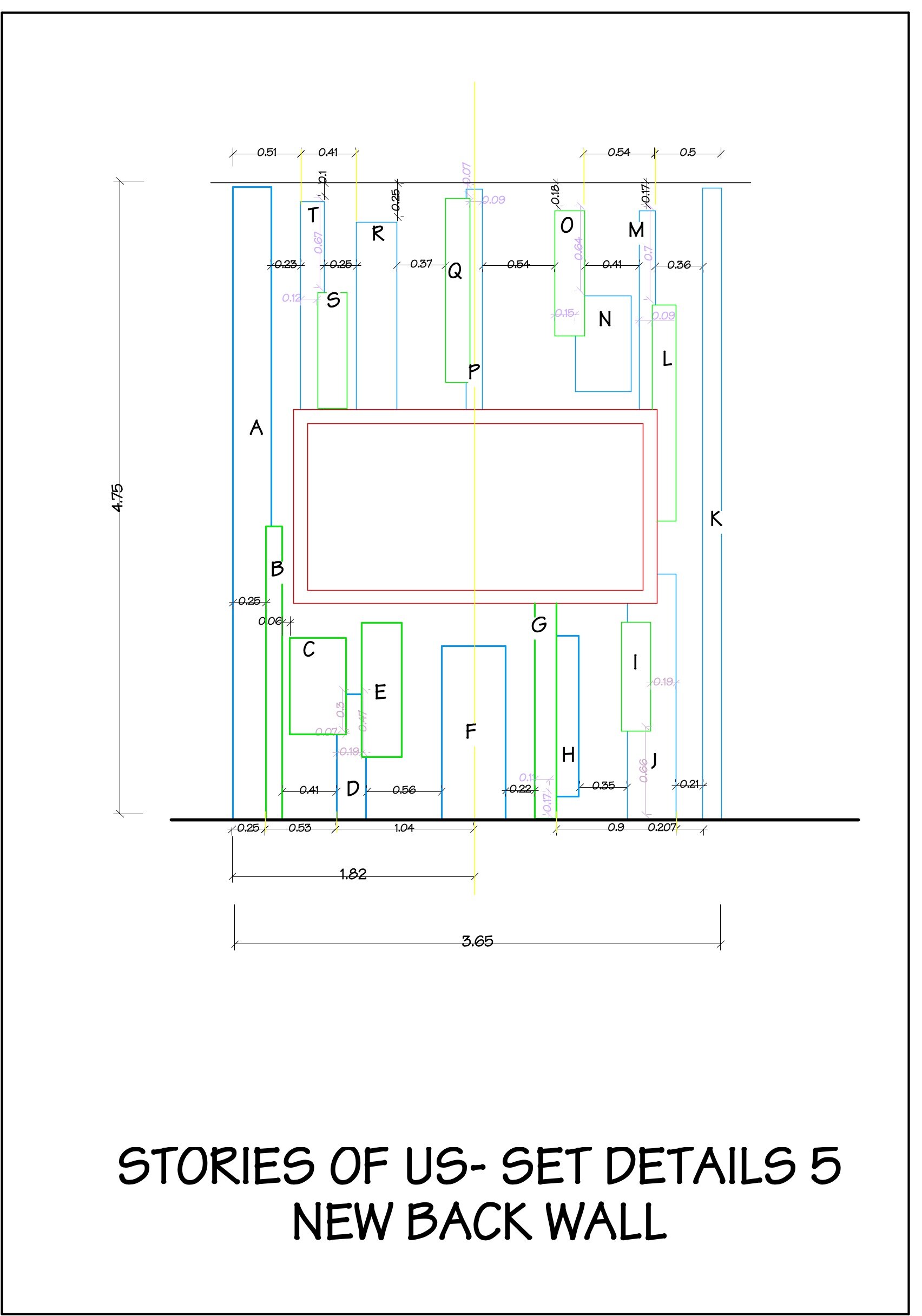
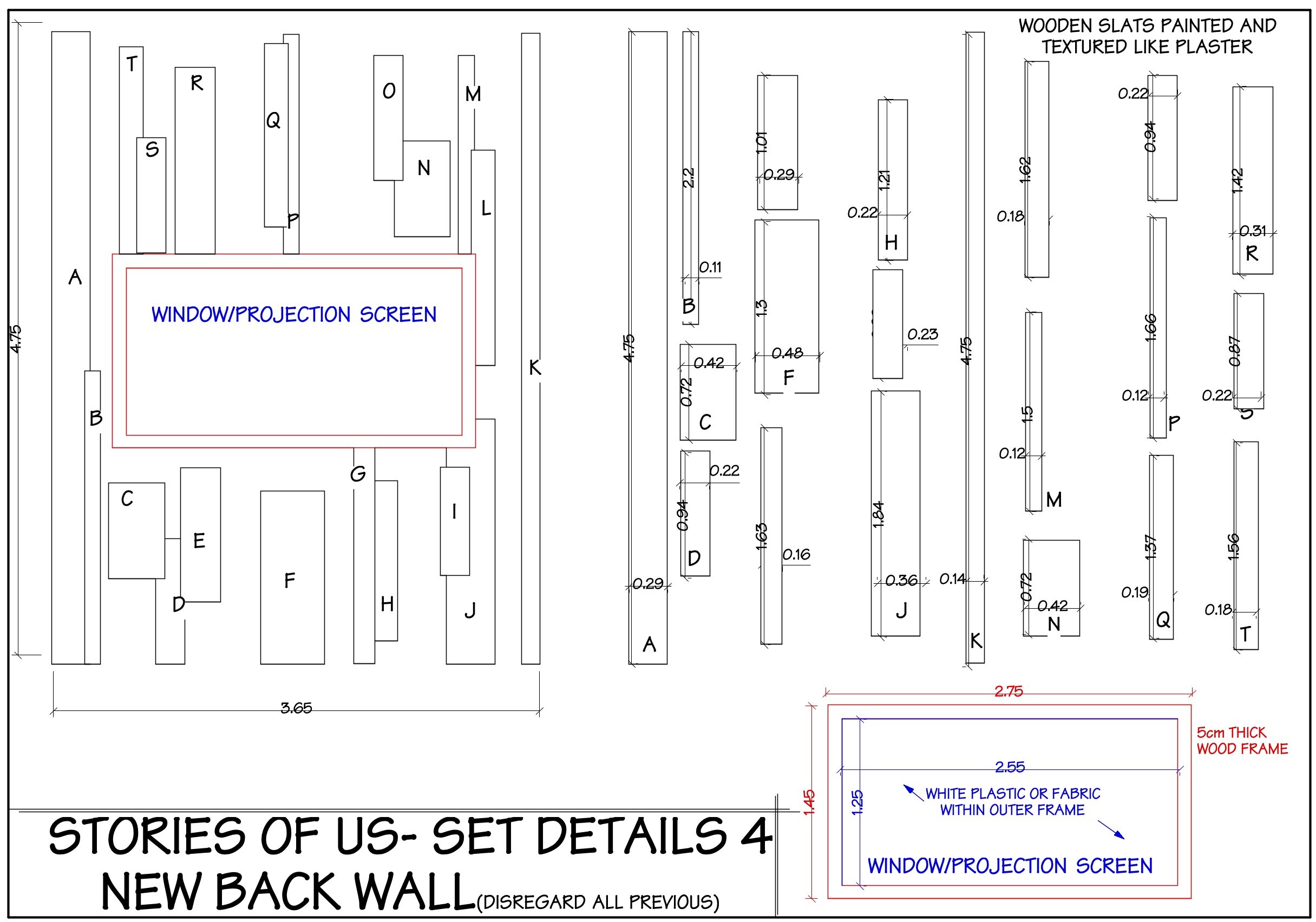
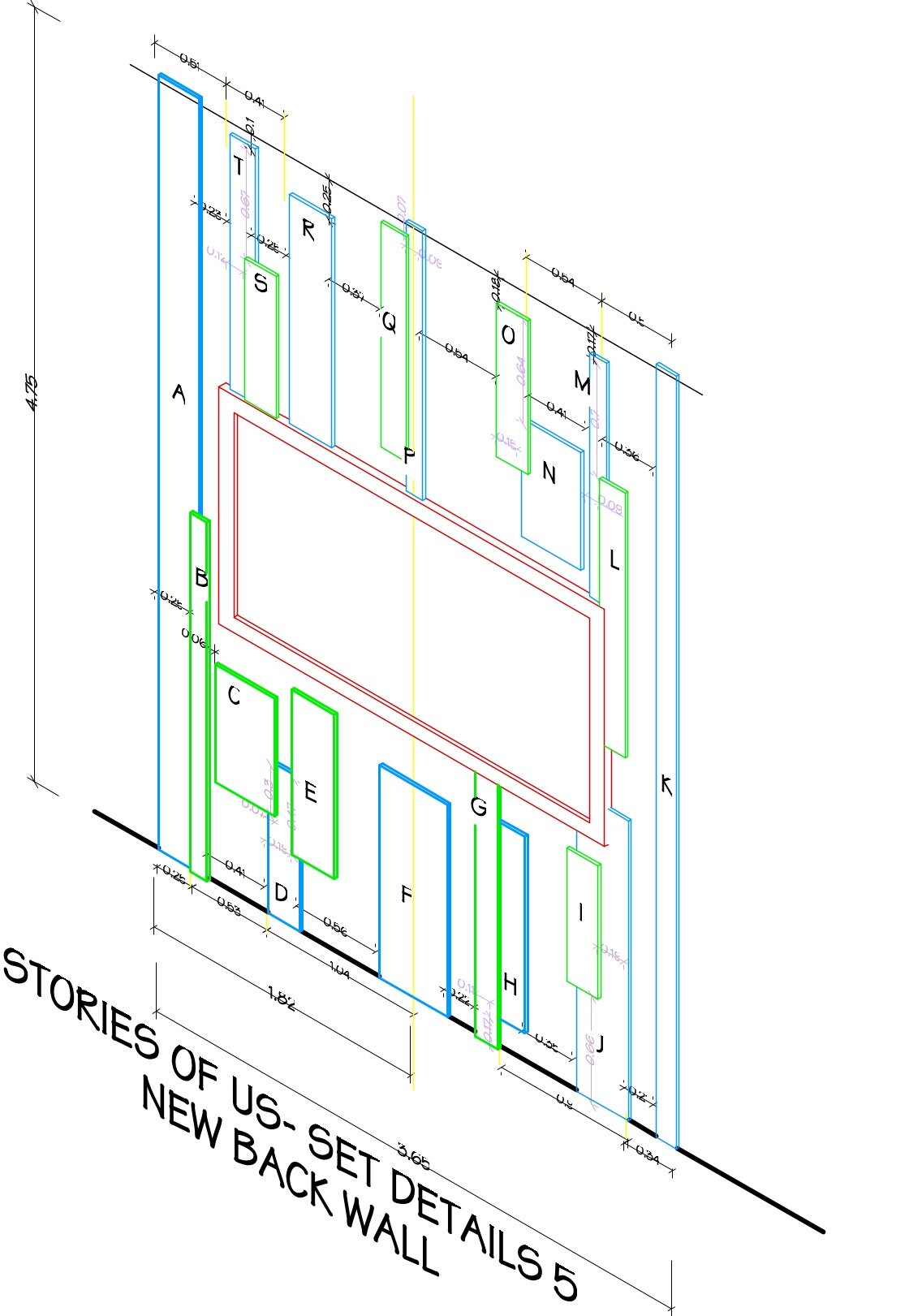
As this new wall idea needed to be disassembled for the transfer to the Falaki Theatre, the input form the staff as to how to make it happen was invaluable.
When the director and I began communicating about the final ideas for the lighting design, I realized that I wouldn’t need the extensive strategies presentation that I used in other situations. So I did a simpler storyboard of the scenes, based on the run throughs that I had seen (https://www.youtube.com/watch?v=6V51a-b19yI). As with the scenic ideas, I had to make sure that whatever was created for the Gerhart Theatre could be reset in the transfer.
Stories About Us- Light plot
Moving to the technical rehearsals was going to be relatively simple, or so I thought. Almost immediately it was realized that the sound and projections that were integral to the first scene hadn’t really even been started. I left my assistants to deal with scenery and lighting for the most part while I directly mentored the student sound designer and basically became the projection designer by field promotion. Despite a nearly two hour delay at the start, and delays with every projection and sound cue as the intention and function was deliberated, we composed the majority of the play on the first day and were back on track within two days. This was very important for the student actors, of which nearly half had never really been in a play before (even though that might not be realized from their performances).
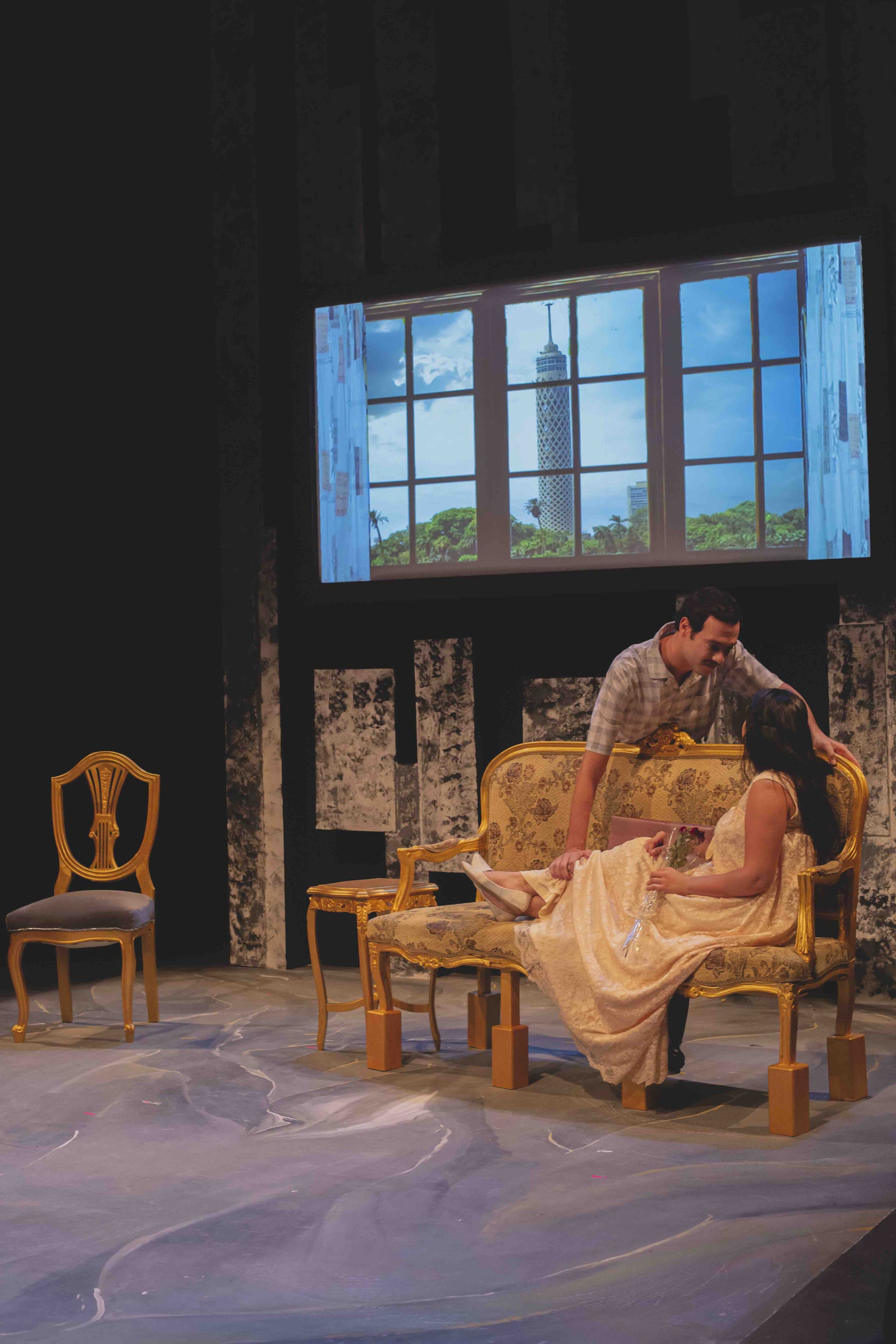
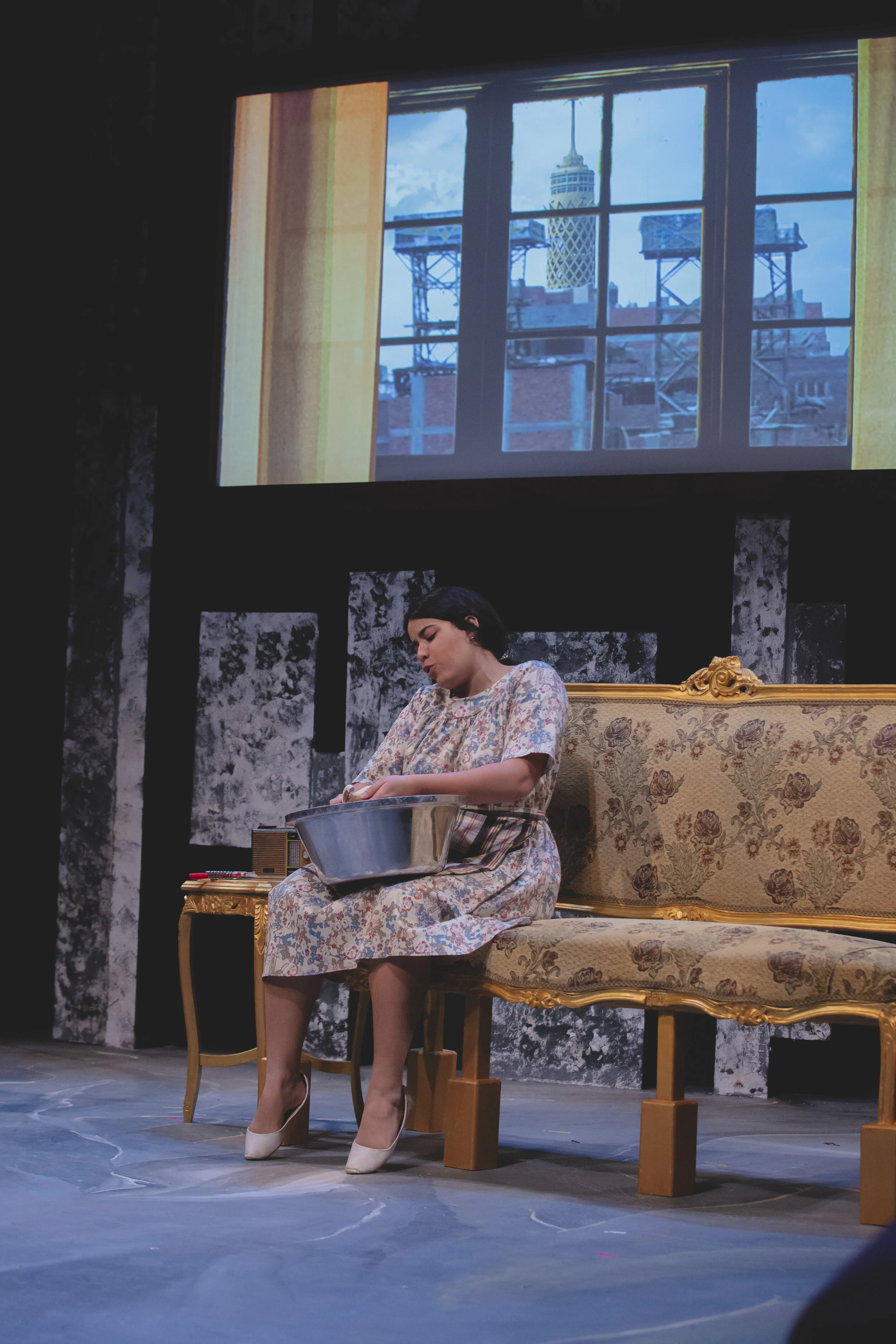
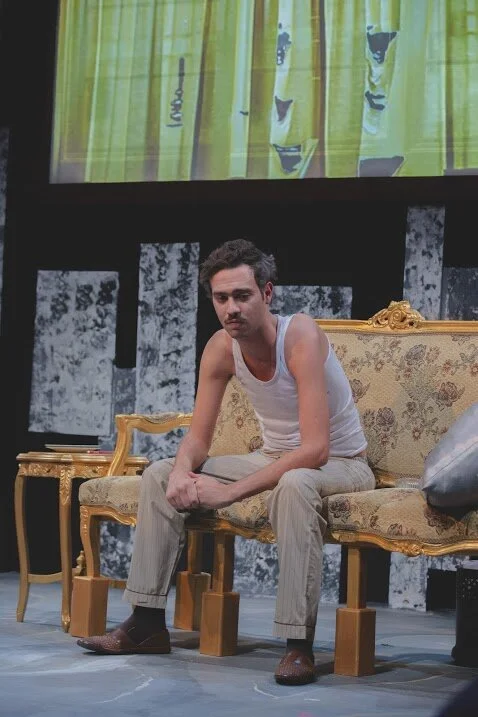
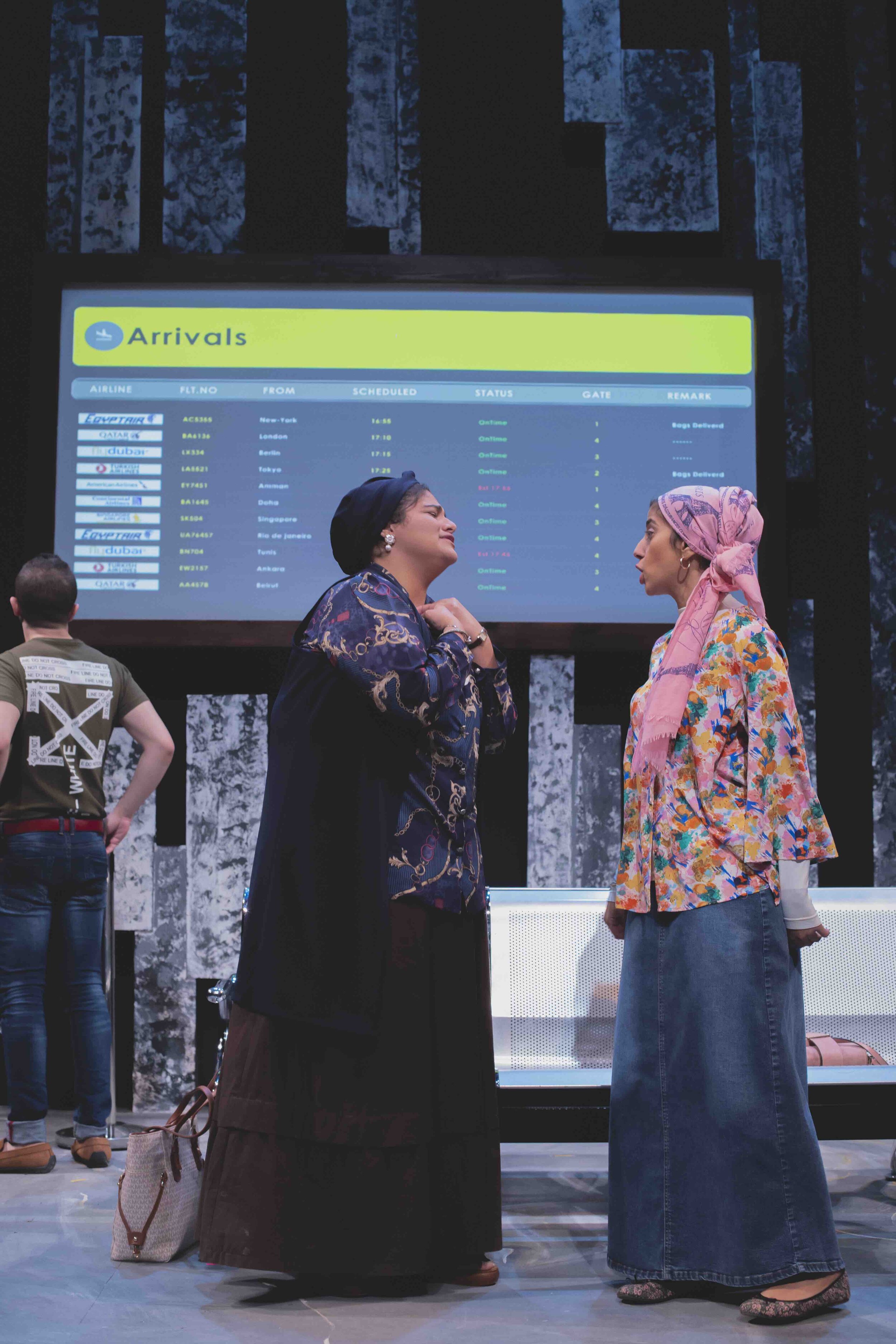
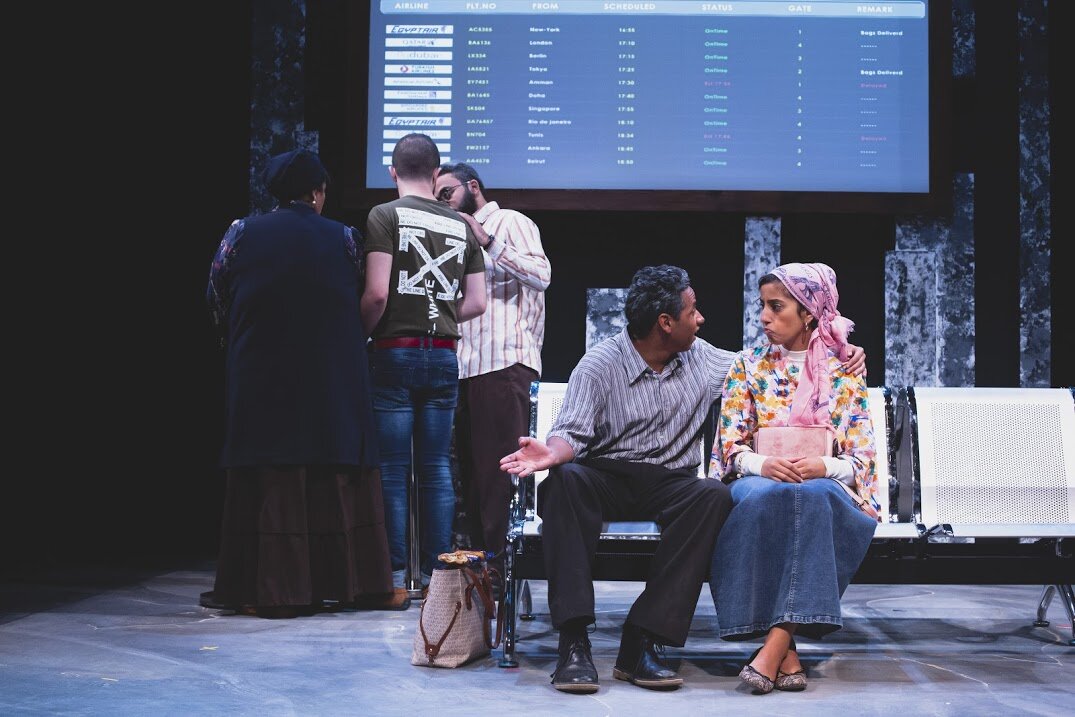
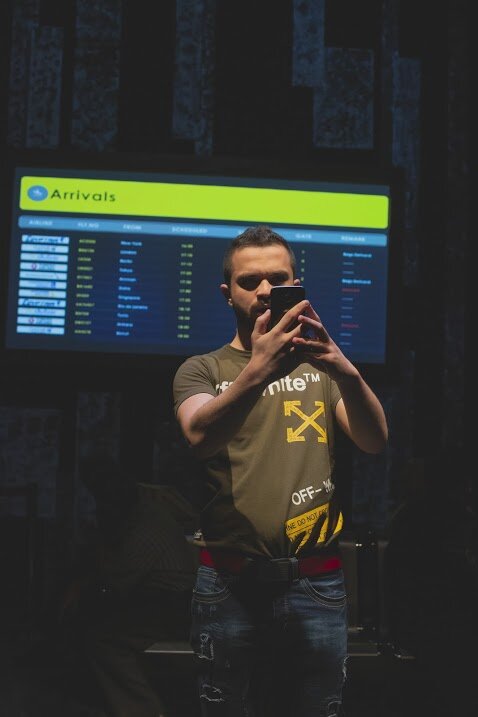

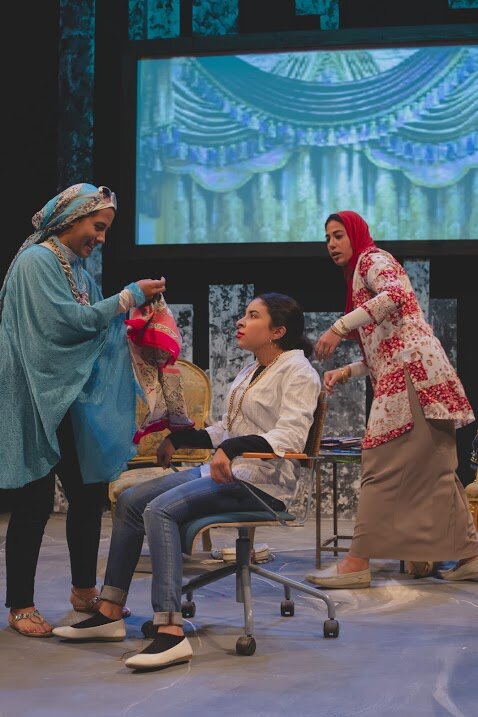
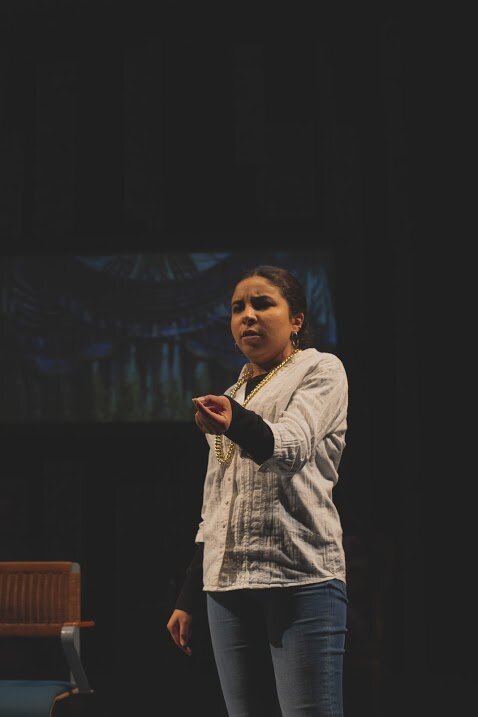
After a standing room only series of performances at the Gerhart Theatre, the play was transferred over a weekend to the Falaki Theatre. The day after the opening I spent the day at the downtown Cairo campus to supervise the installation of the lights and sound system. An interesting story developed during this day. At the Gerhart we used a specific kind of lighting control computer (ETC Expression) that stored the cue information on floppy disks. Yes….floppy disks. Which makes it older than the students that operate it. At the Falaki Theatre there was a similar lighting controller (ETC Insight), which theoretically could read the information on the disk. If we couldn’t do this information transfer, we would have had to take the time to reset the lighting cues for the entire play. That would have taken us about 4 to 5 hours. On the first production day there I took a show disk from the Gerhart and tried to have the controller at the Falaki read the information. I went through the read information procedure. It started and I could hear the disk spin, but then I got an error message. I tried several more times and got the same error message. Then, using my expert computer knowledge, I turned it off and then back on again. The error messages persisted. I tried a disk that was there from the theatre. There was no change in the errors. I decided to open the console to look inside, because if one does that sometimes the technology gets scared and heals itself. It was to no avail. Then, because I couldn’t think of anything else, I picked up the whole device and shook it. There was the sound of something metal rattling that came from the disk drive. Using the professional tools at my disposal, a ball point pen and iPhone light, I opened the access door on the disk drive. The image below shows what fell out. For over 5 years the disk drive was inoperable because of it. I put our show disk back in and like magic all of the information was read and the cues transferred. I was reminded of the old adage “For want of a shoe the horse was lost.” And now there is a new adage that I tell my students, “If it doesn’t work pick it up and shake it. Who knows what might fall out.”
Stories About Us- Floppy disk shutter that prevented the whole drive from working
Over the following days we focused the lights, had a spacing rehearsal and installed the set. Because the Falaki stage is very different from our Gerhart configuration the spacing rehearsal allowed the actors to adapt to the new audience relationship. The architectural design is a unique one in many respects, and typically there is a large distance from the edge of the stage to the audience. Since one of the best things about the performances in the Gerhart was the sense of intimacy created with the audience, special platforms were added to bridge the distance from the downstage edge of the built stage into the audience. The stage and proscenium opening was also much wider so the play was restaged to allow more movement side to side. We couldn’t paint the floor like we had done previously, so the boundaries of the playing area were established by the lighting. Below is the light plot that shows this new arrangement and the translated light plot.
Stories About Us- Falaki Light plot
The majority of the rest of the transfer went very well. The cast adapted to the new staging and the story translated well with the new relationship to the audience. The only issue was acquiring the projector for the video images. At the Gerhart we were able to use a high intensity Epson projector that was designated for the space. But since that space is also used as a classroom, the projector was needed and could not be removed. The only one available at the Falaki Theater was about 25% of the lumen output. Since the lighting and the scenery were going well, I had to dedicate my time to going through my new network of contacts in Cairo to find an acceptable replacement. This involved meeting a technician at 3am at a production shop in a very dark alley to look through their inventory. Several options didn’t work out, but fortunately on the day of the opening we found a projector to suit our needs and I paid for the rental out of my own pocket. The show must go on…



